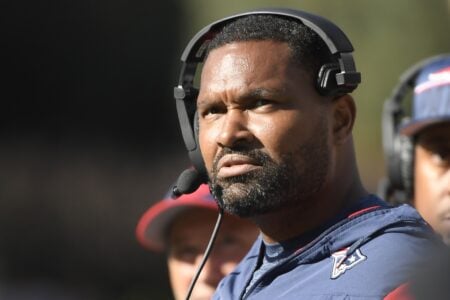PatriotReign
In the Starting Line-Up
- Joined
- Dec 24, 2011
- Messages
- 2,692
- Reaction score
- 1,989
Registered Members experience this forum ad and noise-free.
CLICK HERE to Register for a free account and login for a smoother ad-free experience. It's easy, and only takes a few moments.I thought there were some horrible decisions to go for two on Sunday.
Commentators love to bring up this chart on when to go for two as if it is some kind of work of perfection that cannot be questioned.
The problem is that the logic is flawed. That concept works under the assumption that there will be no other scoring in the game (other than perhaps the same team then scoring again). Therefore going for two when there are ten or twelve minutes to play is only useful when you are down by so much that the only way you can get back in the game is to hold your opponent scoreless the rest of the way. In other words, you have nothing to lose.
Example: Team A is up by 5. They decide to go for two in order to open up a 7-point lead (so they don't lose even if they give up a TD and XP). Problem is that with too much time left if they don't convert, their opponent can win the game with two field goals, or a TD (even without converting the XP).
Another example: Team A is up by 2. They go for 2, so the opponent cannot tie with a FG. Problem is if they don't convert, their opponent can now in with a FG.
A third example: Team A is up by 1. They go for two, so that the opponent cannot take the lead on a FG (with the thinking there is no difference between a 1-point lead and 2-point lead). They don't convert. Team A gets the ball back and goes kicks a FG. Then on the next possession their opponent scores 7 (TD/XP). Now Team A is down by 3 rather than 4; a FG by Team A only ties the score. Had they kicked the XP earlier then a FG would have won the game.
I thought there were some horrible decisions to go for two on Sunday.
Commentators love to bring up this chart on when to go for two as if it is some kind of work of perfection that cannot be questioned.
The problem is that the logic is flawed. That concept works under the assumption that there will be no other scoring in the game (other than perhaps the same team then scoring again). Therefore going for two when there are ten or twelve minutes to play is only useful when you are down by so much that the only way you can get back in the game is to hold your opponent scoreless the rest of the way. In other words, you have nothing to lose.
Example: Team A is up by 5. They decide to go for two in order to open up a 7-point lead (so they don't lose even if they give up a TD and XP). Problem is that with too much time left if they don't convert, their opponent can win the game with two field goals, or a TD (even without converting the XP).
Another example: Team A is up by 2. They go for 2, so the opponent cannot tie with a FG. Problem is if they don't convert, their opponent can now in with a FG.
A third example: Team A is up by 1. They go for two, so that the opponent cannot take the lead on a FG (with the thinking there is no difference between a 1-point lead and 2-point lead). They don't convert. Team A gets the ball back and goes kicks a FG. Then on the next possession their opponent scores 7 (TD/XP). Now Team A is down by 3 rather than 4; a FG by Team A only ties the score. Had they kicked the XP earlier then a FG would have won the game.
I didn’t realize the 2-point conversion in the NFL was so “old”.... man time flies....

Bill Belichick First to Use 2pt Conversion in NFL















